LAMP assay for detecting SARS-CoV-2 Using EzMate Automated Pipetting System
Benefits
Highly customized to meet customer requirements
Reduce hand processes and enhance efficiency as much as possible
Overview
Since 2020, COVID-19 has caused tremendous losses in many aspects. Due to the strong infectivity of COVID-19, to detect people who are infected as soon as possible and decrease manipulated errors are the first priority. qPCR is one of the most effective and well-known methods to detect the amount of SARS-CoV-2 virus in the human body; however, numerous samples are needed to detect results in time and there is a high manpower cost. The reverse transcription loop-mediated isothermal amplification (RT-LAMP) assay is one of the DNA amplification methods with constant temperature and loop formation during the DNA amplification process. RT-LAMP possesses high efficiency such that the operating time is less than 30 minutes and the amplicons produced are higher than the qPCR. It may be more efficient than qPCR in COVID-19 detection.
The EzMate Automated Pipetting System is designed to simplify the pipetting process and eliminate errors resulting from manual operations. In the following example, how the EzMate could be applied in the practice of “Direct RT-LAMP” was introduced. The samples were mixed with a lysis buffer and further mixed with Direct RT-LAMP mastermix. After 20–30 minutes, the results were obtained. The additional RNA extraction process is unnecessary. Besides this, the adaptors used in this example were highly customized. It demonstrates the possibility that EzMate could conform to many requirements for customers.
Workflow
The overall process and equipment for LAMP is described in Figure 1A and 1B, respectively.
(A)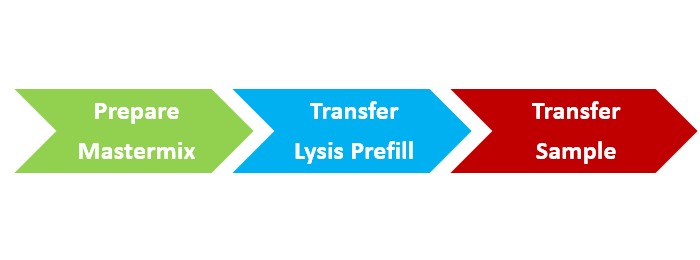 (B)
(B)
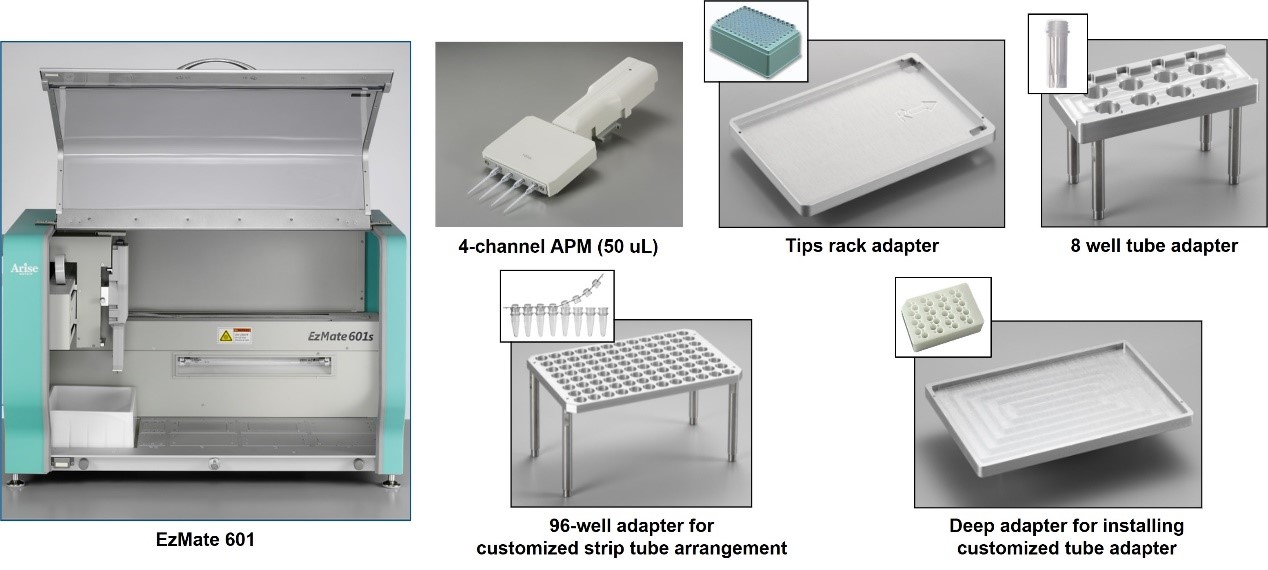
Figure 1. The overall process and equipment for LAMP by utilizing EzMate.
(A) Overall process. (B) Equipment used for LAMP.
- Prepare mastermix (Figure 2)
- The mastermix was transferred from four microcentrifuge tubes to customized arranged strip tubes.
- The operating time was less than the requirement (less than 30 minutes).
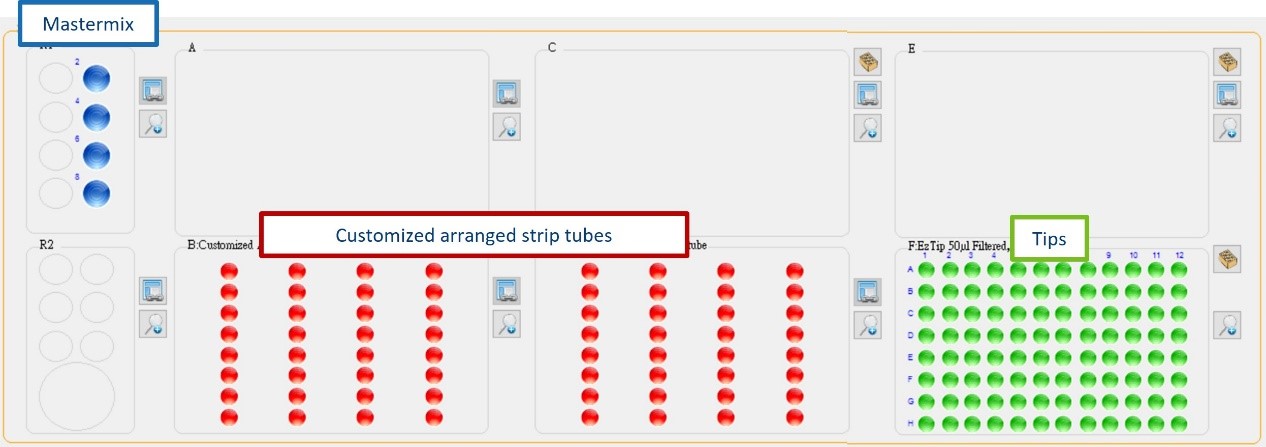 Figure 2. Mastermix preparation.
Figure 2. Mastermix preparation.
The mastermix was prepared and separated into four tubes (blue rounds) and transferred to customized arranged strip tubes (red rounds). Green rounds indicate discarded tips used in sample preparation.
- Transfer lysis prefill (Figure 3)
- The lysis buffer was transferred from four microcentrifuge tubes to customized arranged tubes.
- The operating time was less than the requirement (less than 15 minutes).
- After the prefill, the tubes had samples added by hand.
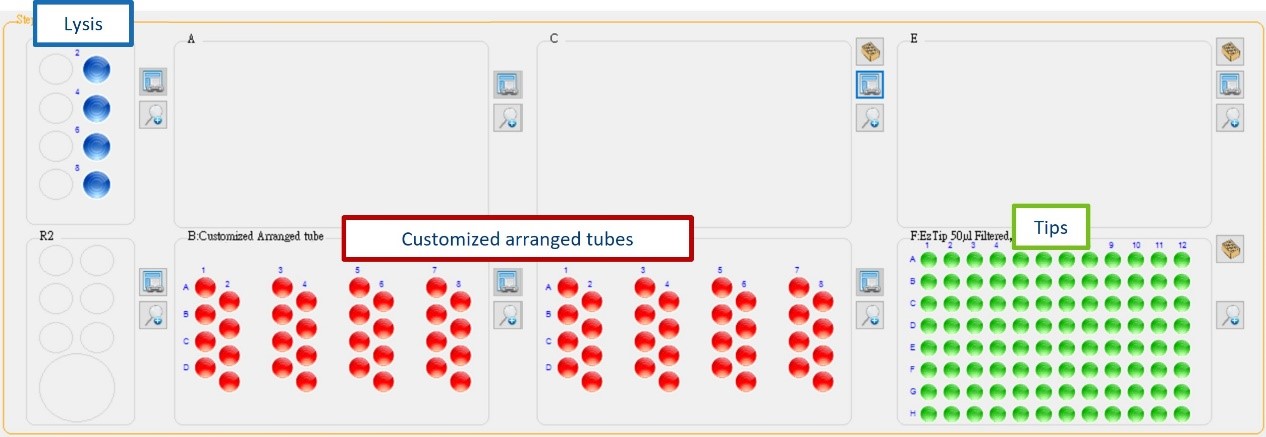 Figure 3. Lysis buffer prefilling.
Figure 3. Lysis buffer prefilling.
The lysis buffer was prepared and separated into four tubes (blue rounds) and transferred to customized arranged tubes(red rounds). Green rounds indicate discarded tips used in sample preparation.
- Transfer sample (Figure 4)
- The lysed samples were transferred from customized arranged tubes to customized arranged strip tubes prefilled with the mastermix in step 1.
- The operating time was less than the requirement (less than 20 minutes)
- After 25 minutes for DNA amplification, the results were obtained.
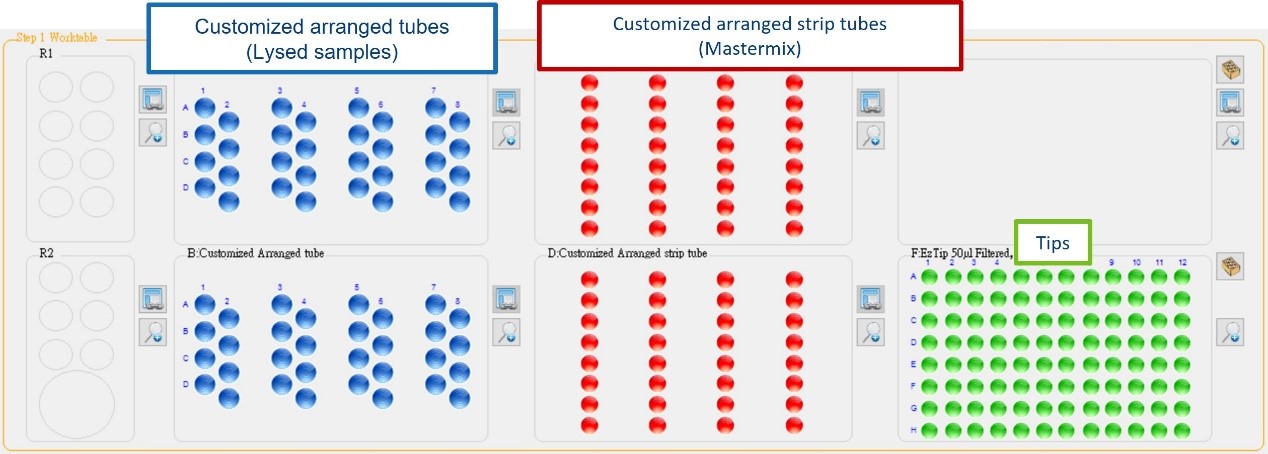 Figure 4. Sample transferring.
Figure 4. Sample transferring.
The lysed samples were transferred from customized arranged tubes (blue rounds) to customized arranged strip tubes prefilled with mastermix (red rounds). Green rounds indicate discarded tips used in sample preparation.
PCR/qPCR Set Up Related Applications
- Evaluate the Performance of Real-time PCR Instruments by Using EzMate 401 Automated Pipetting System
- Efficient qPCR Sample and Pool Testing Preparation for COVID-19 Detection Using EzMate Automated Pipetting System
Learn More About EzMate Automated Pipetting System
We offer customized solutions to suit your experiment need, contact us for further discussion.